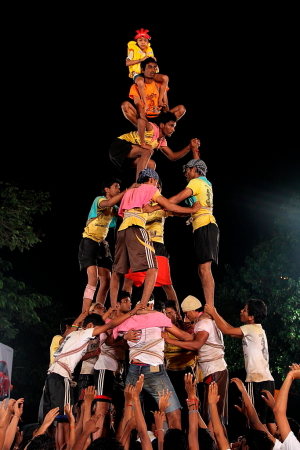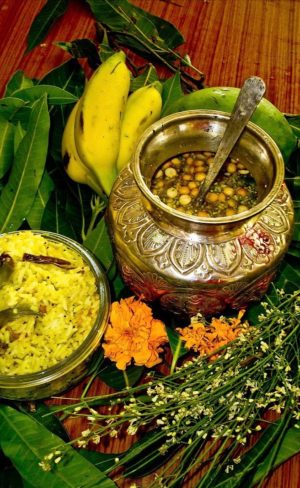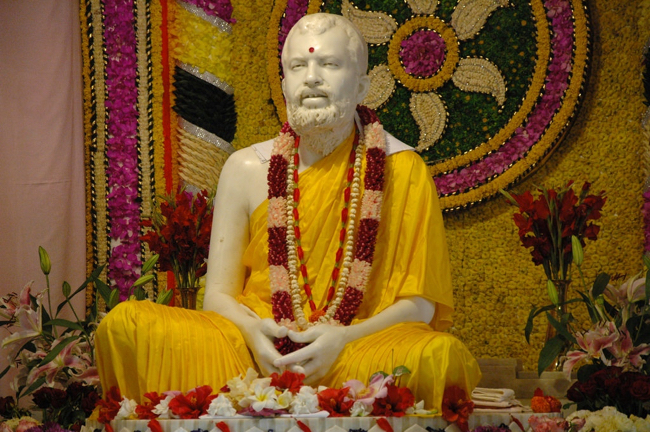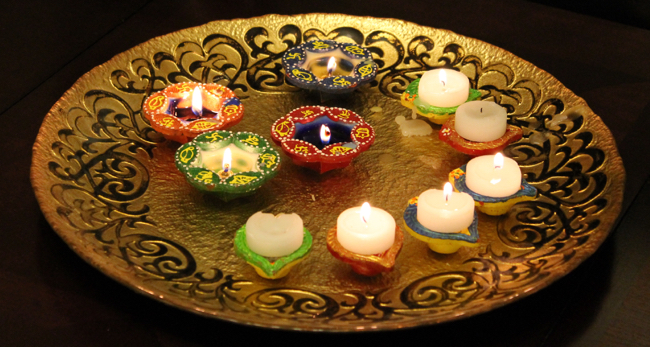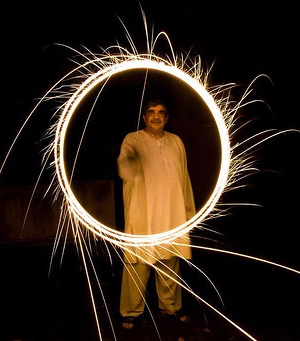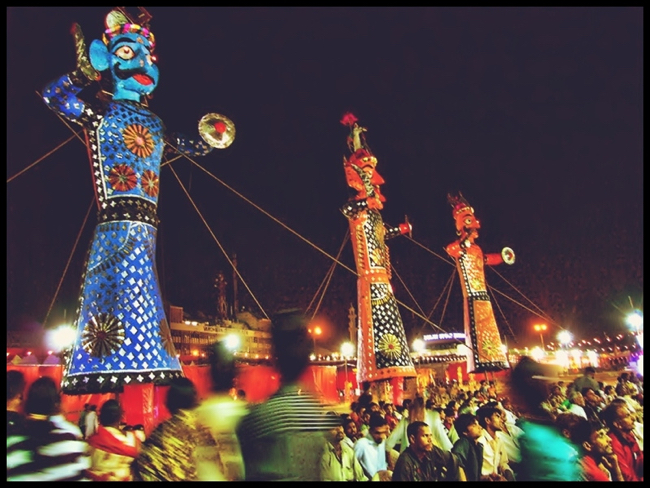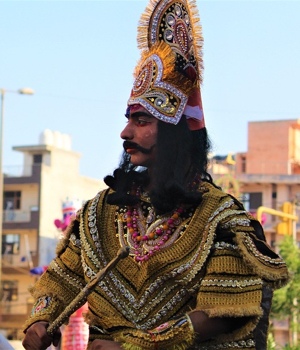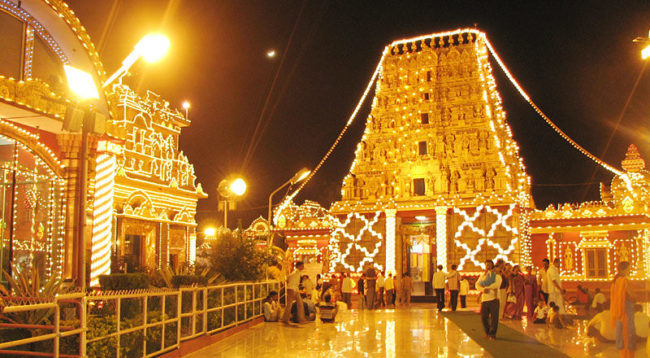
The Gokarnanatheshwara Temple, in India, during Navaratri (on the eve of Dussehra). Photo courtesy of Wikimedia Commons
SUNDAY, SEPTEMBER 29: Hindus begin the nine-night religious festival known as Sharad Navaratri (English spellings vary; the name often appears without the middle “a”), an ancient festival that emphasizes the motherhood of the divine and femininity. Each night during Navaratri, Hindus worship a different form or characteristic of the Mother Goddess Durga, who is regarded as being manifested in cosmic energy and power. In general, Sharad Navaratri is the celebration of good over evil, though many aspects of this tradition vary by region in India and around the world.
Did you know? Navaratri in its basic form takes place a number of times during the seasons of each year, but it’s Sharad Navaratri—this festival, at the beginning of autumn—that takes precedence over any other. Sharad Navaratri culminates on a final day known as Dussehra.
Legends related to this observance differ: Some indicate that Shiva gave permission to Durga to visit her mother for nine days, while others describe Durga’s victory following a nine-day battle with the demon Mahishasura. Life-size clay figures depicting this battle are commonly seen in temples during Navaratri. But there is a universal theme to this tradition, too: All Hindus aim for purity, avoiding meat, grains and alcohol—and usually installing a household pot that is kept lit for nine days. Some devotees fast, and others consume only milk and fruit for nine days.
SINGING AND DANCING IN THE STREETS
Navaratri brings out orchestras and community-wide singing in India: nighttime dances in the streets combine with bountiful feasts and shrines are elaborately decorated. In Saraswat Brahmin temples, statue figures are adorned with flowers, sandalwood paste and turmeric.
In some regions of India, it’s believed that one should try to envision the divinity in the tools used for daily life—whether books, computers or larger instruments—and decorate them with flowers and other adornments, in hopes of both humbling themselves and bringing auspiciousness upon the items that aid them in livelihood.

